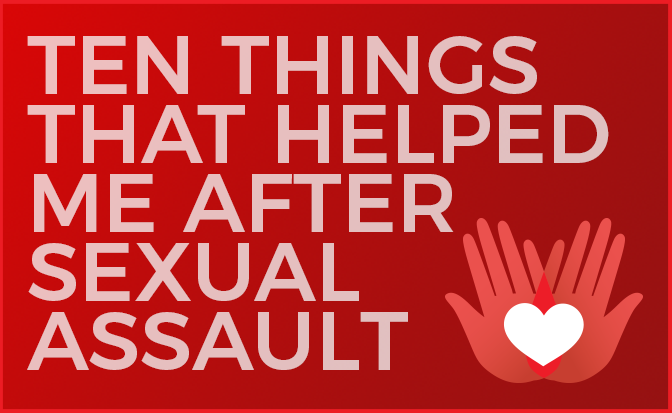Apoyar a los sobrevivientes de asalto sexual: Aquí hay 10 cosas que me ayudaron
Written by James Meadours
My name is James and I’m a rape survivor. I’m also a person with intellectual disability who has been doing advocacy work for many years in the self-advocacy movement. Today, I tell my story about sexual assault that happened to me to help others know they are not alone. I want to help support people to know what they can do to help survivors heal. Here’s what helped me after the sexual assault. I hope this can help other survivors too.
- Survivors need to talk things out. We need a safe place to tell things and be heard. Listen to us, hear us, believe us. Let us talk about it as long as we need to. Let us be brave with you. We are getting out the pain, one conversation at a time.
- I got to see a mental health doctor (counselor/therapist) who talked about sexual assault to me and helped me understand what happened to me. Survivors need help to get a mental health doctor, like I did.
- I didn’t get put in a bubble where nothing bad could ever happen again. Families and professionals should not put a dome around survivors. It would make things worse. The person’s self-esteem and self-confidence would go down.
- Also, don’t tell survivors they can no longer have a girlfriend or boyfriend. People with disabilities shouldn’t be punished for being a victim. Help them have strong and healthy relationships. Help them trust again.
- I took small breaks with the person I had a relationship with (this was not the same person who sexually assaulted me). We got back together a year later after the sexual assault happened. Even though we aren’t still together today, we are still friends.
- Trying to find a relationship with another person after sexual assault has been hard for me. I wanted to share what happened to me with one person I liked and her family, but I did not want to scare them away. What if they don’t understand? I think parents have a more open mind today about people with Intellectual/Developmental Disability having relationships, but what if they are too afraid because sexual assault is so common for people with disabilities?
- As a person who does not have father love and younger siblings in my life, I miss that very much. It is a big hole in my life. For survivors that have holes like me, it’s really important they have friends, peers, and mentors to be family for them. Be there for survivors; you may be their only support right now.
- For those who seek new caregivers because that person sexually assaulted you, it’s fine to replace that person with a new caregiver. You may have to take a big risk to stand up to tell what happened to you. I know it’s scary to tell. But that is your decision to make.
- When you don’t feel safe within your family or with the person who supports you, you could talk to someone else about sexual assault – like a church leader or friend you can trust that will help you talk to police if you want to report it. Find someone in a leadership role that you feel safe talking to. I know it’s a hard subject to talk about. Remember, you are brave and you can find people who can love you and support you through this.
- Take time to recover before helping others. My Sexual Assault Nurse Examiner helped me learn this. She told me to take some time to heal before I tried to go out and change the world with my story. She was right! After about a year of counseling, I started sharing my story with others and it has helped me heal. Make sure you help survivors know it’s OK to take a break, to give themselves time to heal, before they start sharing their stories.

James Meadours is a board member on Texas Advocates, former SAFE Program Advisory Committee member, and a national advocate for healing from sexual assault and the rights of people with intellectual disabilities.
Here’s 10 things that helped me is part of a project to promote expressions of creativity by people with disabilities.
This project was supported by Grant No. 2017-UD-AX-0008 awarded by the Office on Violence Against Women, U.S. Department of Justice. The opinions, findings, conclusions, and recommendations expressed in this publication/program/exhibition are those of the author(s) and do not necessarily reflect the views of the Department of Justice, Office on Violence Against Women.